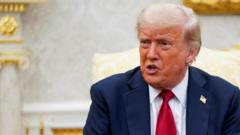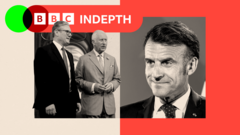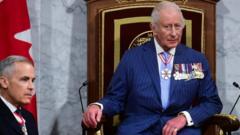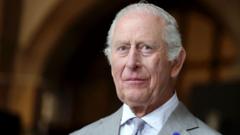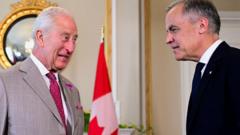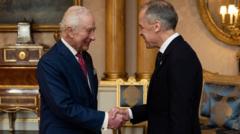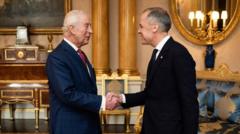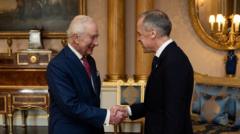The royal train has served the British monarchy for over 150 years, originally introduced by Queen Victoria, but will now be phased out in a significant budgetary decision.
**Britain's Royal Train: A Historic Icon Retires Following Cost-Cutting Measures**

**Britain's Royal Train: A Historic Icon Retires Following Cost-Cutting Measures**
The iconic royal train, a symbol of British luxury, will be retired as part of Buckingham Palace's efforts to save costs, marking the end of an era for royal travel.
The royal train, a long-standing emblem of Britain’s regal heritage, is set to be retired as part of Buckingham Palace's recent cost-cutting initiatives. This decision signifies the end of an era that has seen royal family members travel across the UK in specially designed rail cars for over 150 years, starting with the adventures of Queen Victoria in the 19th century.
Originally hesitant about traveling by train due to fears of its speed inducing madness, Queen Victoria ultimately embraced the train experience after her first journey in June 1842. In her own words, she described it as “delightful and so quick,” paving the way for a recognized mode of royal transportation.
Following her pioneering voyage, Victoria commissioned a luxurious royal train comprising private rail cars adorned with fine materials, including 23-karat gold and blue silk. Although Victoria preferred not to dine on board due to her concerns over digestion, her royal train became an integral part of British heritage.
As we bid farewell to this symbol of the monarchy, it inevitably brings to light the relationship between the current monarch, King Charles III, and his great-great-great grandmother, Queen Victoria. The royal train has connected generations of British royals until now, making its retirement a poignant moment in both history and modern monarchy.
Originally hesitant about traveling by train due to fears of its speed inducing madness, Queen Victoria ultimately embraced the train experience after her first journey in June 1842. In her own words, she described it as “delightful and so quick,” paving the way for a recognized mode of royal transportation.
Following her pioneering voyage, Victoria commissioned a luxurious royal train comprising private rail cars adorned with fine materials, including 23-karat gold and blue silk. Although Victoria preferred not to dine on board due to her concerns over digestion, her royal train became an integral part of British heritage.
As we bid farewell to this symbol of the monarchy, it inevitably brings to light the relationship between the current monarch, King Charles III, and his great-great-great grandmother, Queen Victoria. The royal train has connected generations of British royals until now, making its retirement a poignant moment in both history and modern monarchy.



